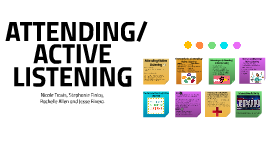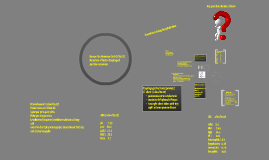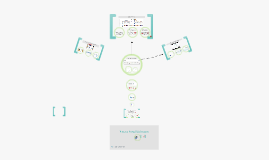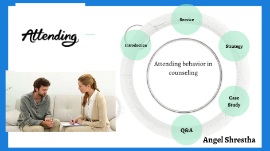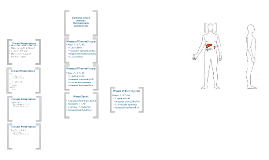Patient Portal Template
Transcript: Patient Portal Utilization Meaningful use is using certified electronic health record (EHR) technology to: Improve quality, safety, efficiency, and reduce health disparities Engage patients and family Improve care coordination, and population and public health Maintain privacy and security of patient health information Meaningful use sets specific objectives that eligible professionals (EPs) and hospitals must achieve to qualify for Centers for Medicare & Medicaid Services (CMS) Incentive Programs. Two metrics: Patient Electronic Access 1: 50% target Measure 1: More than 50 percent of all unique patients seen by the EP during the EHR reporting period are provided timely access to view online, download, and transmit to a third party their health information subject to the EP's discretion to withhold certain information. Patient Electronic Access 2: 5% target For an EHR reporting period in 2017, more than 5 percent of unique patients seen by the EP during the EHR reporting period (or his or her authorized representatives) view, download or transmit to a third party their health information during the EHR reporting period. “When patients interact with their test results, they need to know the purpose of the test, the interpretation of the result, and next steps. Addressing these issues may help improve patient-centered care” (Baldwin, Singh, Sittig, & Giardina, 2016). References 2016 Program Requirements. Retrieved September 25, 2016, from https://www.cms.gov/Regulations-and-Guidance/Legislation/EHRIncentivePrograms/2016ProgramRequirements.html Baldwin, J. L., Singh, H., Sittig, D. F., & Giardina, T. D. (2016, October). Patient portals and health apps: Pitfalls, promises, and what one might learn from the other. In Healthcare. Elsevier. Eschler, J., Liu, L. S., Vizer, L. M., McClure, J. B., Lozano, P., Pratt, W., & Ralston, J. D. (2015). Designing Asynchronous Communication Tools for Optimization of Patient-Clinician Coordination. In AMIA Annual Symposium Proceedings (Vol. 2015, p. 543). American Medical Informatics Association. Heyworth, L., Paquin, A. M., Clark, J., Kamenker, V., Stewart, M., Martin, T., & Simon, S. R. (2014). Engaging patients in medication reconciliation via a patient portal following hospital discharge. Journal of the American Medical Informatics Association, 21(e1), e157-e162. Snyder, E., & Oliver, J. (2014). Evidence based strategies for attesting to Meaningful Use of electronic health records: An integrative review. Available in the. Online Journal of Nursing Informatics (OJNI), 18(3). Wade-Vuturo, A. E., Mayberry, L. S., & Osborn, C. Y. (2013). Secure messaging and diabetes management: experiences and perspectives of patient portal users. Journal of the American Medical Informatics Association, 20(3), 519-525. Wilcox, L., Patel, R., Back, A., Czerwinski, M., Gorman, P., Horvitz, E., & Pratt, W. (2013, April). Patient-clinician communication: the roadmap for HCI. In CHI'13 Extended Abstracts on Human Factors in Computing Systems (pp. 3291-3294). ACM. Stage 3 and MACRA Meaningful Use and the Patient Portal Literature “regular internet use and having a personal computer partially accounted for differences in use of the portal to send messages to health care providers by age, race, and income, whereas education and sex-related differences remained statistically significant even after controlling for internet access and care preference” (Graetz, Gordon, Fung, Hamity, & Reed, 2016). Meaningful Use Usability and Functionality Wanjiku Kariuki Viola B. Leal Mohammad Tabatabai Ana Ibarra Noriega MyUofMHealth.org Secure Messaging “over two-thirds had at least one medication discrepancy at discharge, and nearly one-third had at least one potential ADE” (Heyworth et al., 2014). The authors found that “virtual medication reconciliation following hospital discharge has the potential to improve medication safety in the transition from inpatient to outpatient care” “more effort on the part of the provider is needed to encourage patients to use a portal system. If providers take a more active role in educating patients as to the benefit of the portal, provide a positive view of the system, provide consistent standardized information, and remind the patients in multiple ways and times, patients are more likely to enroll in the portal system” (Snyder & Oliver, 2014). Objective 8: Patient Electronic Access (VDT) Provide patients the ability to view online, download, and transmit their health information within 4 business days of the information being available to the EP. Patient Portal Metric Provider Buy-in Portal on Newer Internet Browser Lab Test Results DMC Patient Portal “patient and provider attitudes toward patient portal use found that the most negatively-perceived feature was user-friendliness, making the portal difficult to navigate” (Baldwin, Singh, Sittig, & Giardina, 2016). “When patients interact with their test results, they need to know the purpose of the test, the interpretation of the







